Eureka Resources acquired Kore Mining via a reverse takeover in late October, 2018. The new company took Kore’s name, stylized KORE Mining (TSXV: KORE). It filled out its management team with Kore executives and created a new board of directors.
Kore had been looking for a vehicle to become public and expand its project portfolio. The new company is now moving forward, focused on Kore’s two development-stage California gold projects and Eureka’s North American exploration portfolio.
“We were well aware that in a difficult market we wanted to have a portfolio of quality projects, not just be a one-asset or a two-asset company focused entirely in California,” KORE president and CEO Adrian Rothwell says in an interview with The Northern Miner. Rothwell was previously Kore’s CEO and one of its founding members. “We wanted to build a company, not just develop a project.”
KORE is permitting its Imperial gold project in southeastern California, consisting of 656 claims covering 57.2 square kilometres. The project is located on the Indian Pass road, 41 km northwest of Yuma, Arizona.
Exploration on the property dates back to 1980, when Gold Fields Mining began a regional exploration program. Glamis Gold published a feasibility study on the property in 1996. It estimated the project has more than 81 million proven and probable tonnes at 0.53 gram gold per tonne for 1.48 million oz. gold.
“Glamis had completed all the required studies to take the project through permitting,” Rothwell explains. “It’s very well understood.”
He says Glamis brought the project through the consultation and permitting process back in 2000 before being denied by the Clinton administration.
“It got politicized in an era in California when they were just out and out, ready to shut down any kind of mining, especially open-pit mining,” Rothwell says.
When the Bush administration took over, then U.S. secretary of the interior Gale Norton put the project back into the permitting process. But when California instituted back-filling it, at US$300 gold, rendered the project uneconomic.
“Glamis requested the project be removed from the permitting process,” Rothwell says, “and that’s where it has sat ever since.”

Kore Mining’s Long Valley gold project in California. Credit: Kore Mining.
Then, in 2012, Delta Gold completed a National Instrument 43-101 compliant preliminary economic assessment on the property based on more than 59,000 metres of drilling across 349 holes. The study outlined a US$215-million, pre-tax net present value at a 5% discount rate and US$1,300 gold price. It said the mine could produce 120,000 oz. gold per year over 10 years.
It tabled a resource estimating the deposit has 45.7 million indicated tonnes grading 0.6 gram gold per tonne for 879,000 oz. gold as well as 76.3 million inferred tonnes at 0.53 gram gold for 1.29 million oz. gold.
Delta had optioned the project from Goldcorp (TSX: G; NYSE: GG), but returned it to Goldcorp in 2013. In 2017 Kore acquired 100% of the project from Goldcorp. It sits 16 km from Equinox Gold’s (TSXV: EQX) Mesquite gold mine, in the same county. Kore spent money it raised privately on updating a couple of the biological studies and doing a permitting feasibility study, an economic analysis and a resource review. It intends to release an updated resource on Imperial in the next three months.
“This is why permitting doesn’t necessarily attract a lot of investment,” Rothwell says. “It’s not sexy work that we’ve done. It’s tons of desktop, tons of behind-the-scenes work.”
The company notes that the project sits on federal land and needs the federal government to grant the mine permit. If the government approves the mine plan, the county could approve the reclamation plan.
“The county supports this project. They know what this means to Imperial county,” Rothwell says.
The project has road access and power lines. It features an aquifer that has already been tested for water flow. KORE aims to update the project with a prefeasibility study in 2019.
The company’s second development project is its 7 sq. km Long Valley gold project in east-central California. Kore acquired the project from Vista Gold (TSX: VGZ; NYSE-AM: VGZ) in 2017, although exploration on the property dates back to the early 1980s, and covers multiple operators.
In April 2018, Kore tabled an updated resource for Long Valley. The project has 66.8 million measured and indicated tonnes grading 0.58 gram gold for 1.24 million oz. gold, as well as 23.5 million inferred tonnes grading 0.64 gram gold for 486,000 oz. gold.
“We’re taking a bit of a different approach on Long Valley [to see] how it can add value,” Rothwell says. “It needs about a year and a half of work before we put it into the permitting process — so it’s about a year and a half behind Imperial.”
The company wants to expand the resource at Long Valley. It aims to drill at least 2,500 metres at the project in 2019 to test density, metallurgy and water quality. It will consider a mine plan that focuses on the project’s higher-grade oxide zones, although the project also contains sulphides at depth that have graded as high as 6 grams gold.
“There is the opportunity for a larger program,” Rothwell says. “This is the optionality on the project for a larger operator, if they were to buy it.”
KORE is also exploring its Gold Creek and FG gold projects in British Columbia. At Gold Creek, it recently cut 25.7 metres at 1.3 grams gold from 28 metres downhole, including 3 metres at 8.6 grams gold, as well as 50 metres grading 0.7 gram gold from 99 metres downhole in a drill program started by Eureka.
The company drilled 940 metres across four holes during its phase-one program at Gold Creek. It discovered visible gold in two of the holes. The drilling extended the project’s Camp zone 300 metres along strike, where it is open along strike and at depth.
The company plans to drill six holes at Gold Creek followed by 15 holes at FG.
“We’re excited on both of these projects to see those results come out over the next month, and a financing would be on the back of that,” Rothwell says. “We would be spending some of it in California, but that is a very inexpensive program, because most of the work has been done. The majority of the work would be drilling in British Columbia.”
Shares of KORE Mining are trading at 14¢ in a 52-week range of 14¢ to 50¢. The company has a $10-million market capitalization.

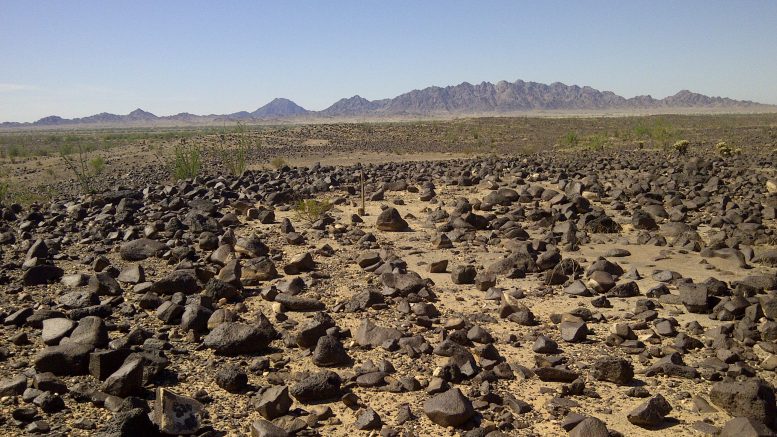
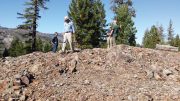
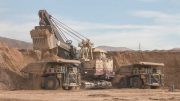
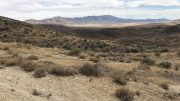
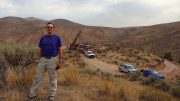
Be the first to comment on "Newly formed KORE prepares for permitting in California"